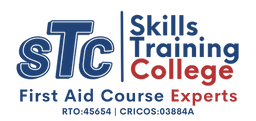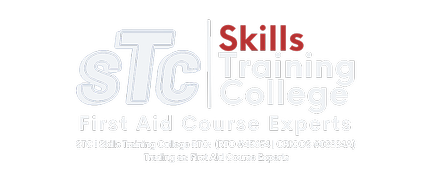Spinal injury management is crucial in providing First Aid to someone suffering a back or spine injury. Spinal injuries can be devastating and lead to a spinal cord injury (SCI) if the accident is not correctly managed and treated with First Aid for Spine care. Motor vehicle accidents and other traumatic events in the sporting arenas significantly contribute to spinal cord injury.
Damage to the delicate bundles of nerves and the nervous system within the vertebrae, in what might appear to be nothing, could result in the loss of function to arms and hands, lower limbs, paraplegia, quadriplegia, broken neck, crushed vertebra and sciatic nerve damage.
It is imperative that the person is not moved and remains motionless flat on their back unless the situation around them is of a higher life-threatening state, like the car bursting into flames or rolling down a cliff.
If the person stops breathing, then CPR measures take the higher precedence but with particular emphasis on keeping the airway open and the head supported so the spine remains as straight as possible.
Signs and Symptoms Of Spinal Injury
- Evidence of head injury or trauma
- Abnormal position of head or neck
- Nausea, headache, dizziness, Tenderness, pain
- Altered sensations – numbness, tingling, pins and needles in the hands or feet
- Loss of movement and/or feeling to arms and/or legs
- Altered conscious state
- Breathing difficulties
- Shock Change in muscle tone (flaccid or stiff)
- Loss of bladder or bowel control
- Reassure – Tell them to keep still
- Manually support the neck until the ambulance arrives
Manually supporting the neck is vital when rolling the person onto their side!
If you need to provide CPR to a spinal injury patient alone, you will struggle to gently hold the casualty’s head and support the neck without movement. You will require both hands to roll the person correctly into the recovery position. However, where possible, attempt to keep the neck and spine in one straight line.
Roll them onto their side and position the neck to be neutral by using their hand as a block to prevent unwanted movement. Keep the head tilted slightly backwards to ensure a clear and adequate airway by always manually supporting the neck once they are on their side. If props can be sourced to keep the head at the same level as the spine, they should be employed. If not, saving their life by providing CPR takes precedence over all other injuries.
The only exception to CPR not being the first step when providing lifesaving First Aid is when an artery has been severed. Applying a tourniquet to stop the flow of blood takes precedence over CPR. Not taking this step means any CPR given will only cause the blood manually pumped to exit the body in a spurt with each compression, thus making attempting to save their life redundant.
Risk Hazards Of Moving Spinal Injuries Without The Correct Equipment
When moving a person with suspected spinal injuries, a flat board of any description strong enough to hold the person’s weight must be used. Medical crews have a range of speciality backboards designed to be easily placed around the patient with little movement.
Where there is no external life-threatening situation that requires the person to be moved from the site the injury was obtained and where the person is conscious, it is imperative that the person not be moved unless it is to provide CPR.
Damage to the spinal cord: Further unnecessary movement may cause the loss of feeling and movement in the limbs, leading to either paraplegia or quadriplegia, depending on where spinal damage has occurred along the spine.
Further movement: This could cause further injury or aggravate the spine and patient, resulting in a loss of bladder control or a worsening of what might have been a minor vertebra injury that would have healed without further damage to the spinal cord.
All spinal injuries should be treated as a life-threatening emergency, and an ambulance should be called using the (000) triple zero emergency number.
That is not to say that all back injuries will become life-threatening or involve spinal damage of any kind. All precautions should be taken by treating any back or spine injury as a critical situation. Taking this step could significantly reduce any chance of unwanted spinal trauma or damage going unnoticed or unexamined by a qualified medical professional treating with the appropriate range of scans, x-rays, and testing. After a spinal injury has been ruled out, the patient will be given the okay to resume normal function.
Providing First Aid
Providing First Aid might seem complicated and scary, but once you have been taught the correct basic techniques and treatments for each situation, you will find it surprisingly easy to learn more complex procedures.


